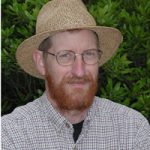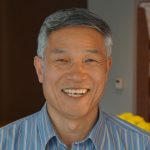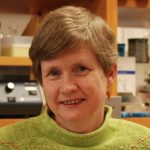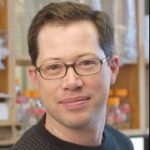
Justin Colacino
Environmental Health Sciences
Dr. Justin Colacino is an Assistant Professor of Environmental Health Sciences in the School of Public Health. His research focuses on understanding environmental and dietary factors in carcinogenesis and cancer prevention. Specifically, the goal of his research is to characterize the environmental susceptibility of normal human stem cell populations, elucidating the etiology of sporadic cancers. Of particular interest are understanding the changes that occur at the epigenetic and transcriptional level, changes which affect not only gene expression but also how progenitor cells differentiate and divide. His research group combines wet lab bench work and bioinformatic and statistical analysis of large scale genomic and epidemiologic data sets to translate findings from in vitro models to the population level.

David Michener
Matthaei Botanical Gardens and Nichols Arboretum
Dr. Michener’s research focuses on peony domestication, genomics, and cultural history, as well as rematriation of culturally linked heritage plants and plant conservation.

Duxin Sun
Pharmaceutical Sciences
Drug discovery and nanomedicine for cancer therapy: The Sun Lab’s research focuses on drug discovery and nanomedicine for cancer therapeutics. Specifically, they are currently working on: (A) Natural Products to eliminate cancer stem cells; (B) Drug discovery targeting epigenetics and cancer stem cell targets, (C) Nanomedicine for targeted drug delivery and cancer therapy; (D) ADME and pharmacokinetics for lead compound optimization, and (E) Drug release in GI tract for modified release (MR) drug products.

Stephen Smith
Ecology & Evolutionary Biology
My lab conducts research on phylogenetics, plant evolution, transcriptomics, and molecular evolution. We use new data sources to address questions about how species are related.

David Sherman
Microbiology and Immunology / Chemistry
The Sherman laboratory studies biological catatysts and metabolic pathways involved in producing natural products from photosynthetic organisms, particularly cyanobacteria. The high value small molecules generated from these systems have exciting applications in pharmaceutical discovery and bioenergetic materials.

John Schiefelbein
Molecular, Cellular, and Developmental Biology
A fundamental feature of development in multicellular organisms is the specification and patterning of distinct cell types. Our lab studies the formation of the hair and non-hair cell types in the root epidermis of Arabidopsis thaliana as an elegant and powerful model system for uncovering the mechanisms of cell specification.

Richard Rabeler
Ecology & Evolutionary Biology
I specialize in the Caryophyllaceae. One of my major interests involves documenting occurrences of introduced members of this family, especially in the Great Lakes region and the southeastern United States. These plants are often much more widely distributed than suggested by floristic manuals. I am also interested in nomenclature and relationships of the genera and subfamilies that are included in the Caryophyllaceae. I am active in the Flora of North America project, currently serving as Co-Lead Editor on Volume 17 with Dr. Craig C. Freeman of the University of Kansas. I am also Past-President of the Society for the Preservation of Natural History Collections.

Laura J. Olsen
Molecular, Cellular, and Developmental Biology
Proteins synthesized in the cytoplasm must be targeted to their proper subcellular location and transported across the appropriate organellar membrane boundaries. Dr. Olsen’s research focuses on the assembly of peroxisomes, which are small organelles present in all eukaryotes.

Erik Nielsen
Molecular, Cellular, and Developmental Biology
The long-term aims of my research program are centered on the following three interrelated aims: (1) identify and characterize membrane trafficking pathways involved in polarized secretion in plant cells; (2) determine the molecular machinery that sorts cargo for polarized secretion, especially those components involved in sorting of plant-specific polysaccharides and cell wall proteins (e.g. hemicelluloses and arabinogalactan proteins); and, (3) examine how polarization cues from neighboring cells and tissues are perceived and how they influence the subcellular orientation of plant secretory pathways.

Nancy Love
Civil and Environmental Engineering
I am an environmental engineer who focuses on water quality and waste management. Many of my projects fit, but the one that may be of greatest interest is my NSF INFEWS project where we are looking at technologies that transform urine into usable fertilizer for crops and non-crop plants, risks associated with this form of fertilizer versus synthetic fertilizer or other “sustainable” reuse fertilizers (like biosolids), and testing which methods are most effective in advancing human acceptance of this approach to nutrient (resource) recovery and reuse.
Contact
Green Life Sciences Initiative
Admin. Email:
green-life-science@umich.edu
A collaborative effort with the Program in Biology and faculty from:
Ecology & Evolutionary Biology
Molecular, Cellular, & Devel. Biology
School for Environment and Sustainability
Earth & Environmental Sciences
Civil & Environmental Engineering
